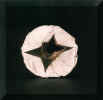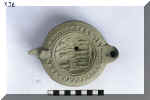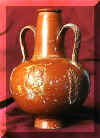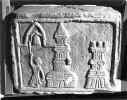 Saint
Agatha's Museum is worth visiting because it sheds light not only on Malta's
past, but also on that of the neighbouring Mediterranean countries.
Saint
Agatha's Museum is worth visiting because it sheds light not only on Malta's
past, but also on that of the neighbouring Mediterranean countries.St. Agatha's Historical Complex
MUSEUM
Click on the thumbnails to view full size image
 Saint
Agatha's Museum is worth visiting because it sheds light not only on Malta's
past, but also on that of the neighbouring Mediterranean countries.
Saint
Agatha's Museum is worth visiting because it sheds light not only on Malta's
past, but also on that of the neighbouring Mediterranean countries.
This Collection was started by the Servant of God Joseph De Piro, founder of the Missionary Society of Saint Paul, and after his death (September 17, 1933) members of the same Society continued to look after this patrimony, adding along the years, other items and collections.
Although it is housed in a small premises, the exhibits are numerous, ranging from fossils and prehistoric remains to minerals and crystals; from Etruscan pottery to medieval votive stone slabs and a numismatic collection.
The fossils collection consists of sea shells, various types of clypeasters, fish, sharks' teeth (some of which are still in situ in the globicerine limestone) and a number of shark, whale and other fish vertebrae.
Another section contains bones of Elephas Melitensis, the pygmy elephant, and of hippopotami and deer. There are also broken tusks of elephants. The most important exhibit is the right jaw of a hippopotamus which is said to be unique to the island. Such remains date back to about 175,000 years.
The bulk of the minerals and
crystals collection was donated by Mr. Alfred Magri, a Maltese migrant in Australia. The collection amounts to about 1900 specimens
from various countries. they show the beauty hidden in rocks, mountains and the
depth of the sea. There are some rare specimens such as Tourmaline crystals,
Azurite crystals, Berthierite crystals, Amethyst, Tellurium. Dendrite, Topaz,
Meteoritic-Iron, Lapsis lazuli, Embolite, Morion crystals, Dravite crystals,
Tektites, Titania and others.
Maltese migrant in Australia. The collection amounts to about 1900 specimens
from various countries. they show the beauty hidden in rocks, mountains and the
depth of the sea. There are some rare specimens such as Tourmaline crystals,
Azurite crystals, Berthierite crystals, Amethyst, Tellurium. Dendrite, Topaz,
Meteoritic-Iron, Lapsis lazuli, Embolite, Morion crystals, Dravite crystals,
Tektites, Titania and others.
In the main hall one can admire the variety and quantity of pottery exhibited. Some of these date back to about the 6th century BC, and besides a variety of oil lamps, cups and dishes, one can see a Neolithic axe, a stone hammer and weights.
Of great importance are three stone thymiateria of various heights. they are beautifully carved and these served as incense burners, or as a sort of an altar on which offerings were set infront of a deity.
In the main hall there is the Punic pottery. All types of pottery normally found in Maltese Punic tombs and also in Christian tombs are on exhibit.
 A
number of oil lamps of variuos types could be admired in this hall. The earliest
are the Phoenician, that have a shape of a saucepan with two or more nozzles.
Then there are the Punic, Roman, Jewish and Christian oil lamps. The latter are
usually decorated with Christian symbols like the Chi and Rho, the dove with a
palm branch in its beak, lambs, crosses, rosettes and other symbols. Most of
these carry the potter's stamp at the base.
A
number of oil lamps of variuos types could be admired in this hall. The earliest
are the Phoenician, that have a shape of a saucepan with two or more nozzles.
Then there are the Punic, Roman, Jewish and Christian oil lamps. The latter are
usually decorated with Christian symbols like the Chi and Rho, the dove with a
palm branch in its beak, lambs, crosses, rosettes and other symbols. Most of
these carry the potter's stamp at the base.
In this hall there are also a number of Roman glass ware such as perfume bottles and cups, together with bronze mirrors, bracelets, and ivory pins, some of which were found in Saint Agatha's Catacombs.
Of unique importance is the
collection of Etruscan pottery, most of it dating back to
t he
4th
century BC. There are various types of pottery all decorated with mythological
scenes. They are either black in colour with brown figures or vice versa, brown
in colour and black figures. Some have also embossed decorations. Among the
exhibits in this collections there are
amphorae, jugs, cups, lekitos, a child's rattle and other various
specimens. A beautiful dark brown decorated amphora, the largest amongst the
items dominates the collection.
he
4th
century BC. There are various types of pottery all decorated with mythological
scenes. They are either black in colour with brown figures or vice versa, brown
in colour and black figures. Some have also embossed decorations. Among the
exhibits in this collections there are
amphorae, jugs, cups, lekitos, a child's rattle and other various
specimens. A beautiful dark brown decorated amphora, the largest amongst the
items dominates the collection.
The last hall contains various collections that had to be grouped together due to limited space. Among the paintings, one is the work of a famous artist. This is "The Madonna of Itria" by Stefano Erardi (1630-1716).
There are also some statues and sculptures, a collection of Maltese coins throughout the centuries, silver watches and clocks, ganutell decorations ( filigree and silk flowers) and a number of medieval stone votive slabs.
Among the statues and sculptures, the most striking is the alabaster statue of Saint Agatha, which Bishop Lucas Buenos donated to the crypt in 1666. It is a fine work of art in baroque style.
The votive slabs collection is a
unique collection. About a hundred of these are exhibited in the mu seum
while some others still form part of the façade of the church, of the side
walls and of the dome os the church. Some of these were found in the debris when
the church was restored in 1959-60. They represent various subjects: religious
decorations, rural decorations and animal motifs.
seum
while some others still form part of the façade of the church, of the side
walls and of the dome os the church. Some of these were found in the debris when
the church was restored in 1959-60. They represent various subjects: religious
decorations, rural decorations and animal motifs.
Two slabs of this collection are very important: they are dated 1504, the date when the church of Saint Agatha was built. Some beautifully sculptured ones show pelicans, which are christian symbols; two others show the style of church steeples in the middle ages; while others show Saint George on horseback, the crucifix, crosses, the coat of arms of Aragon and that of the family Falzone.
Saint Agatha's Museum is a private museum and it belongs to the Missionary Society of Saint Paul and it is open to the general public.
![]()
![]()
maintained by: karm s. borg mssp
© MSSP - Malta - 2001